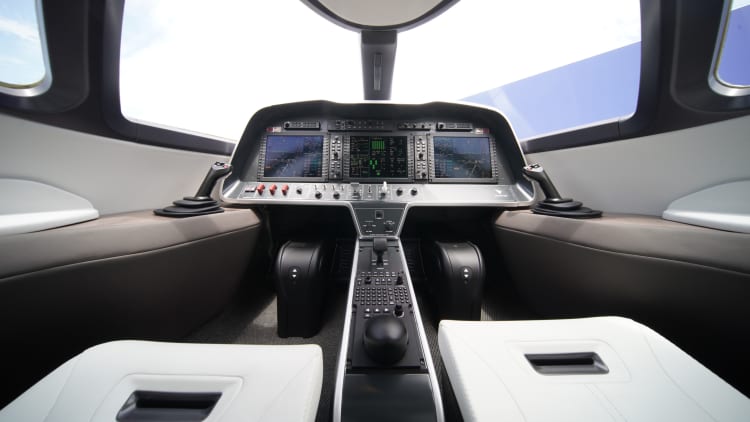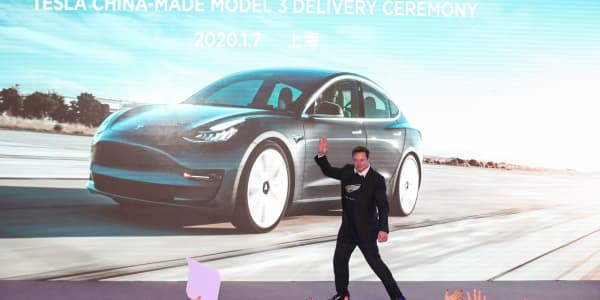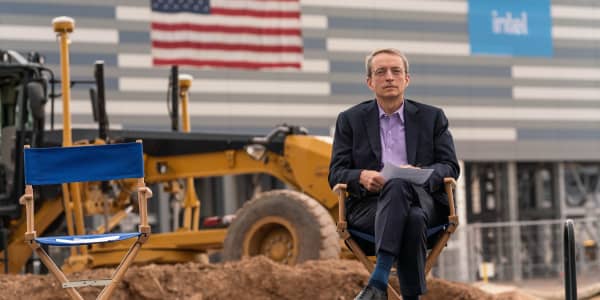Of all the headlines about Greta Thunberg's U.S. tour this fall, one that traveled widely was this: The newly minted Time 2019 Person of the Year made her way from her native Sweden to America via sailboat, because she thinks jetliners emit too much carbon.
The $800 billion annual market for airfares and the $700 billion market for equipment, led by jets, results in an aviation sector that produces about 2% to 3% of the world's carbon emissions, according to jet manufacturer Airbus. Reducing them is among the industry's top, and toughest, challenges for the next decade or more.
Top producers of planes and engines are partnering in a drive to bring technologies to market that are similar to hybrid and electric engines for automobiles. But because planes weigh so much, batteries to power many of them would also be prohibitively expensive barring major changes in technology, especially on longer flights. That means interim measures like biofuels are also on the agenda, even as research and development gets moving on electric planes.
The aviation industry knows it has to reduce emissions, and airlines have a vested interest in reducing the cost of fuel, which for most carriers is the second-biggest expense behind labor.
"Flying is a good thing, and emissions are a bad thing,'' said Alan Newby, director of aerospace technology at Rolls-Royce, the British maker of aircraft engines (The Rolls-Royce automobile brand now belongs to BMW). "Our job is to disconnect the two."

Air travel is becoming more widespread among a growing global middle class, and without technological change, emissions from aviation could triple by 2050, according to the Environmental Defense Fund.
Rolls-Royce has partnerships with Airbus and other players to work on both hybrids and fully electric planes. Pratt & Whitney, a unit of United Technologies, is selling a more fuel-efficient engine technology now, while its parent company works on longer-range projects, spokesman John Thomas said.
Boeing, the biggest Airbus rival in the airplane field, is testing a line of small electric planes designed to do some of the jobs taxicabs do now. And General Electric's airline-engine unit signed a deal in June with XTI Aircraft Company to use GE's Catalyst engine as the core of a new hybrid-electric propulsion system for a planned XTI business aircraft.
Israel-based aviation start-up Eviation is working with partners including Siemens and Honeywell on a plane it calls Alice, an all-electric commuter aircraft for regional transport.
The challenge is to meet a goal set by the International Civil Aviation Organization, a United Nations body based in Montreal, to make planes 2% more efficient per year and make the industry's growth be net carbon neutral by 2020, a goal that ICAO's most recent environmental report acknowledged won't be met.
Because of slow technological development, much of the ICAO's plans to date are based on incremental measures such as carbon offsets, rather than short-term deployment of electric planes. Initially, aircraft makers and airlines are also focused on developing biofuels and on improvements in airplane efficiency, according to an ICAO report.
Two big projects at Rolls-Royce
That sets the stage for efforts like Rolls-Royce's two big initiatives, one to build a hybrid plane that blends battery power and conventional power, developed jointly with Airbus and Siemens, and a fully electric plane it's developing separately.
The Rolls-Airbus-Siemens hybrid plane is trying to meet European Union goals to cut CO2 emissions by 75% by 2050, while reducing nitrous oxide by 90% and noise by 65%. It will work by using a supplemental electric motor to help supply the extra power needed for takeoffs, while letting smaller, more fuel-efficient engines do the work of maintaining the plane at cruising altitude.
Rolls-Royce and Airbus hope the hybrid plane, known as E-Fan, will be ready for maiden test flights by 2021, Newby said. The program is expected to serve regional airline flights, rather than long-haul jumbo planes, according to the partner companies. And it's not likely to be ready for commercial flights for years, allowing for engineering and testing before full deployment.
"To deploy in 2030, I need my technology mature by 2025," Newby said. "It might seem like a long time to you, but it feels fast to me.''
Fully-electrified planes at passenger scale are far away, and so far are being designed in the expectation of serving shorter-term flights with fewer passengers. Eviation's plane is designed to seat nine. Rolls' has a partnership with the Norwegian airline Wideroe to electrify its fleet of regional airplanes by 2030. Norway has a goal of carbon-free domestic air transport by 2030.
The problem is, two-thirds of fuel used in aviation powers international flights, the ICAO says, and no one thinks the heaviest planes that cover those routes will be among the first to go electric. That places a premium on other new engines that are more efficient, but still use conventional fuels or biofuel blends.
At Pratt & Whitney, the bigger short-term push is to build the market for the geared turbofan engine, which went on sale commercially in 2016. A more fuel-efficient conventional engine, it has enabled a 16% reduction in fuel consumption in Airbus A320s, the company said. The engine had a number of quality problems early on, which a company spokesman said Pratt & Whitney has resolved.
Over the long run, carbon emissions from aviation have to come down, but pushing them to zero won't be easy or quick. Thunberg might not decommission her sailboat any time soon.
Correction: The original version of this story misidentified Raul Arce-Contreras as an ICAO spokesperson.





